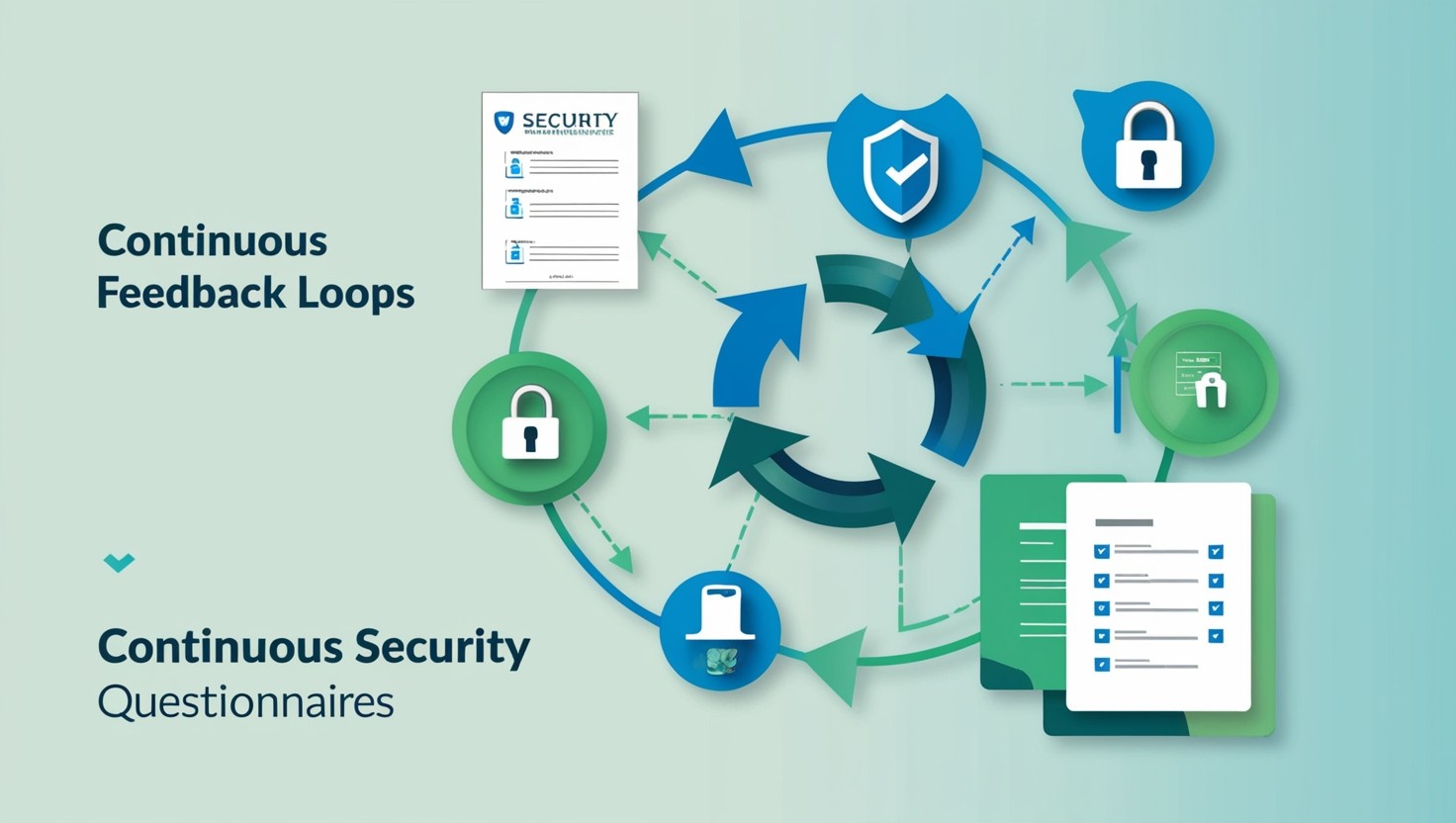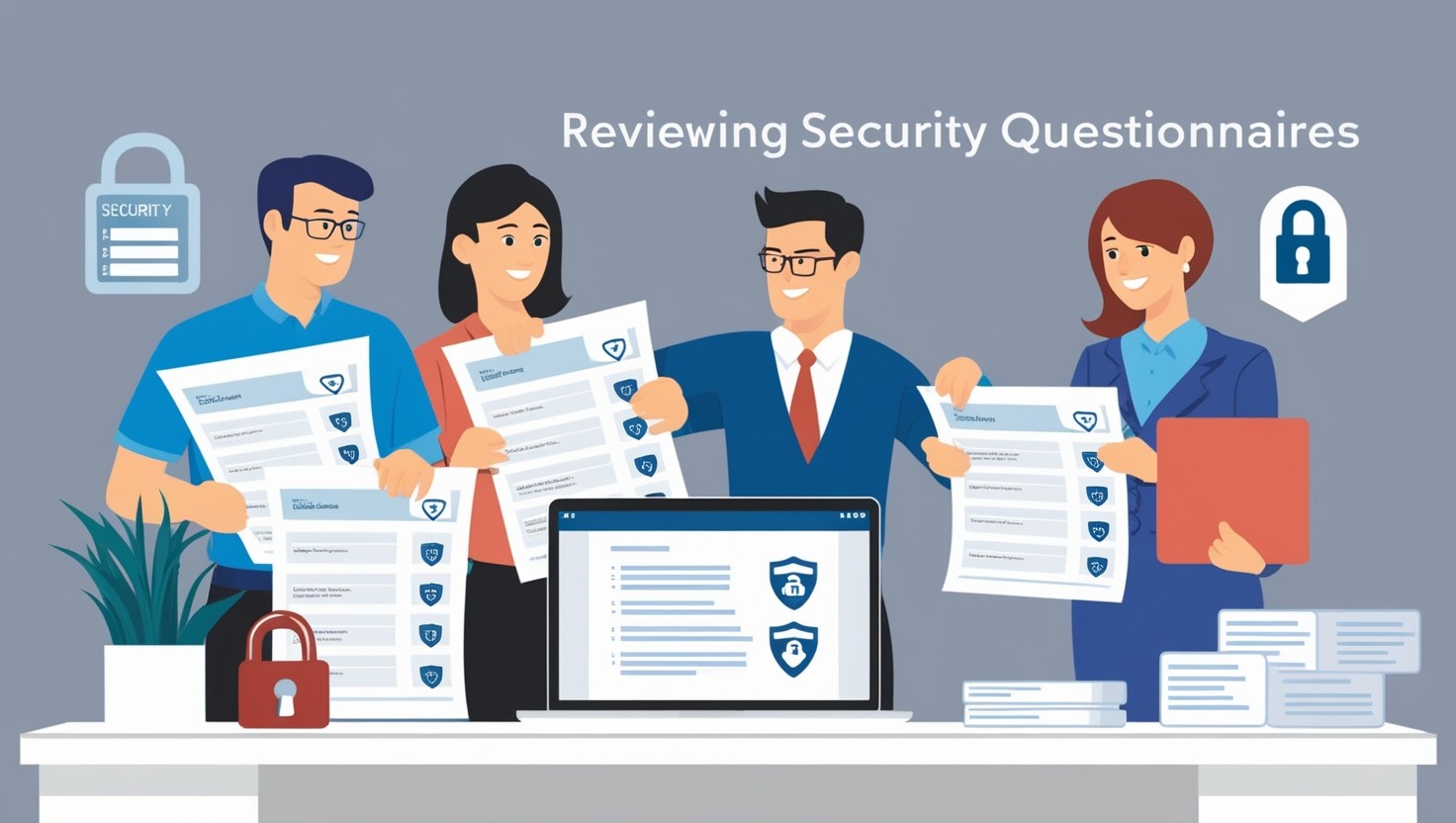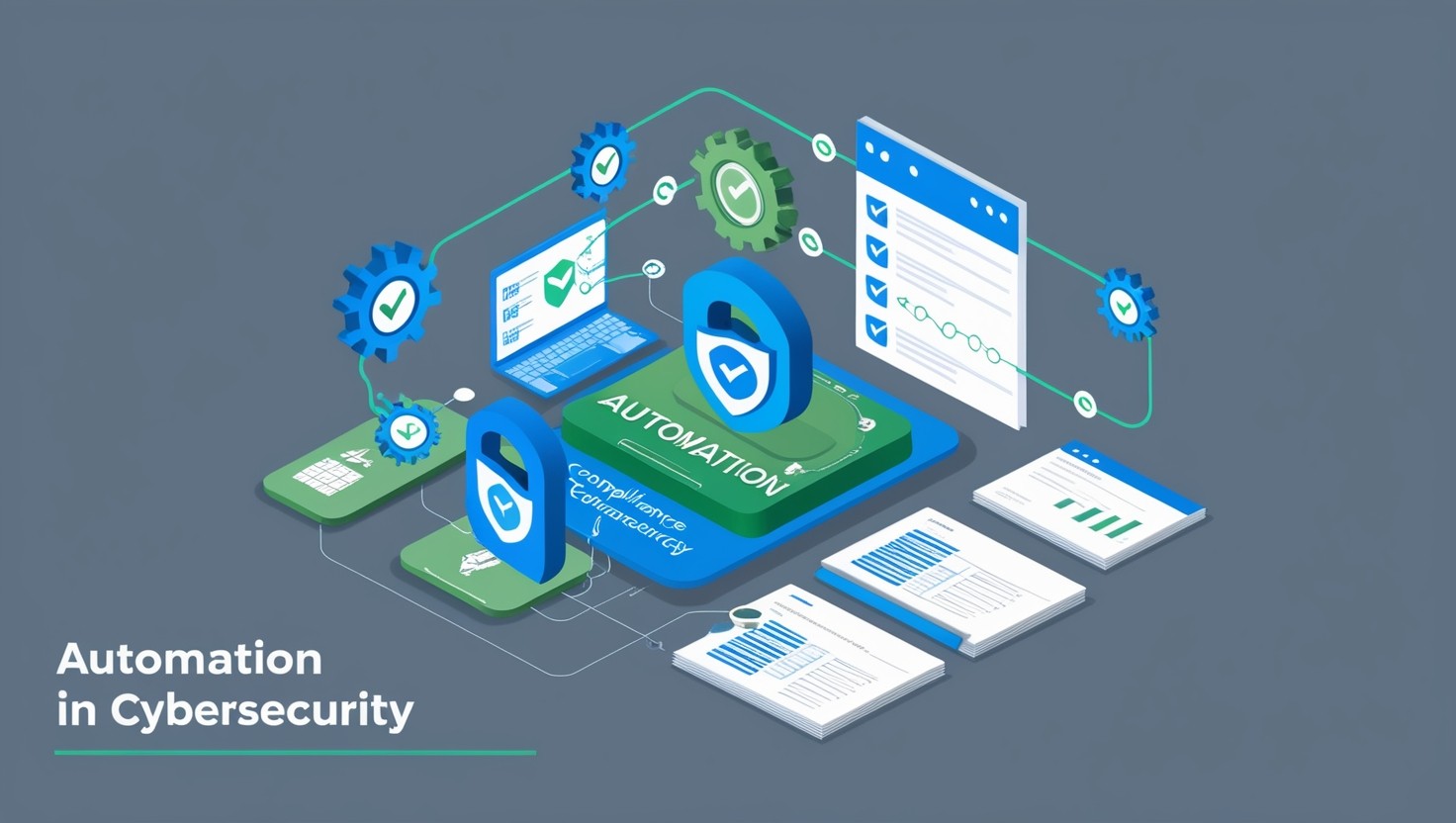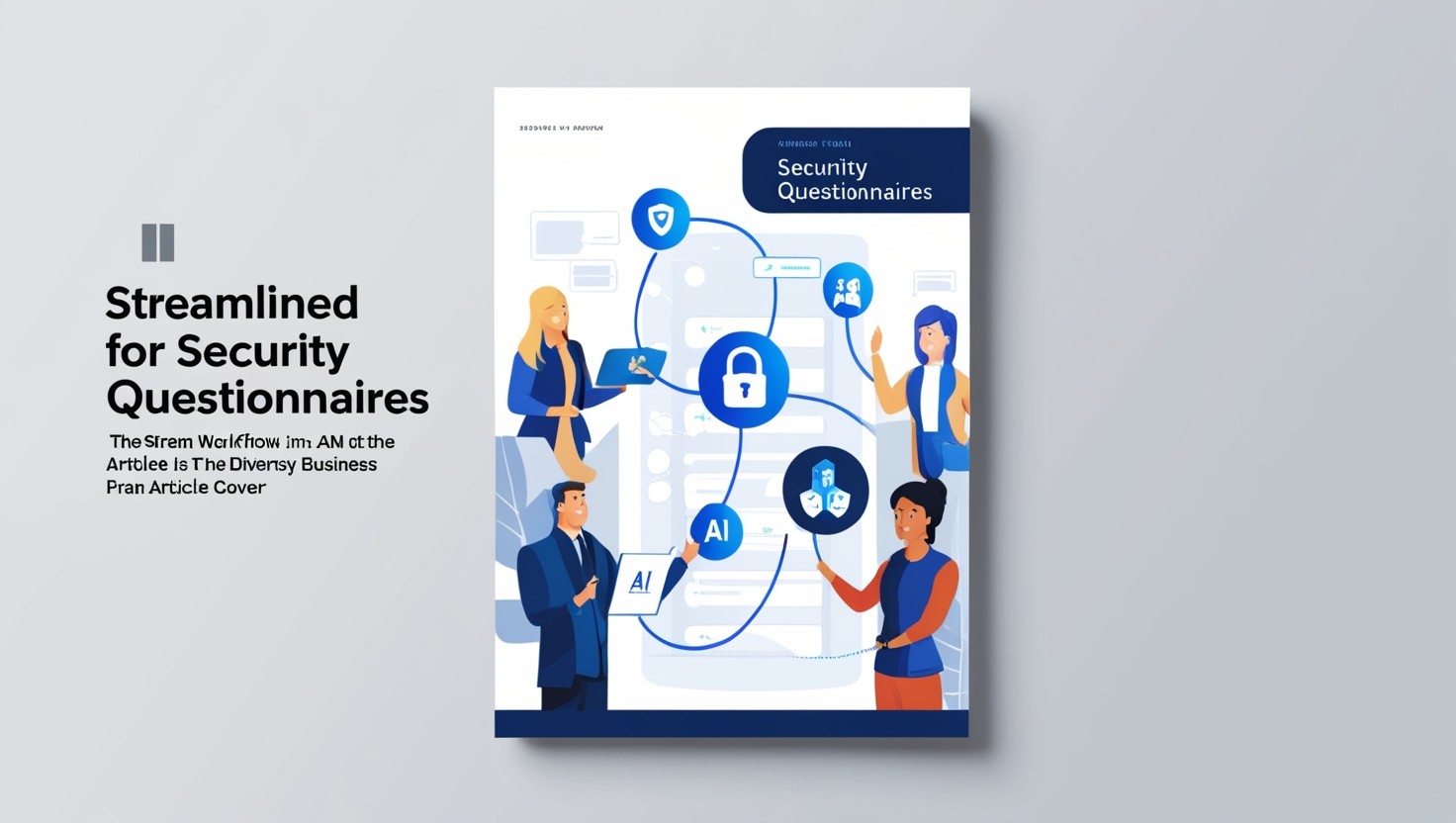How AI and automation reduce the complexity of security questionnaires
Share This Article

Understanding AI in Security Questionnaires
Impact of AI on Security Questionnaires
Artificial Intelligence (AI) has brought significant improvements in the field of security questionnaires, particularly in automating and simplifying the process. AI, specifically Generative AI, has revolutionized Governance, Risk Management, and Compliance (GRC) by transforming risk management and compliance with regulations (Scrut Automation). Generative AI focuses on creating new and original content, such as text by learning patterns from existing data and generating unique output.
AI helps in automating the creation of compliance reports, risk assessments, and policy documents. This automation ensures precision and consistency, enabling swift analysis of vast amounts of data to identify potential compliance issues and risks. By integrating AI, companies can benefit from the following:
Efficiency: AI reduces the time spent on filling out security questionnaires.
Accuracy: AI minimizes human errors, ensuring accurate responses.
Consistency: AI maintains consistent language and formatting across documents.
For those new to security questionnaires or struggling with them, our article on why security questionnaires are a nightmare provides valuable insights into common frustrations and challenges.
Evolution of AI Technology
The evolution of AI technology has been pivotal in enhancing the capabilities of security questionnaire automation. Initially, AI was primarily used for simple tasks like autocorrect or basic data sorting. However, advancements in AI, particularly in Natural Language Processing (NLP) and machine learning, have expanded its application.
Modern AI systems can now analyze complex datasets, generate predictive models, and even understand and generate human-like text. This evolution allows AI to:
Analyze Data: Identify risks and vulnerabilities.
Generate Content: Automate the creation of compliance and risk assessment documents.
Monitor Changes: Keep abreast of regulatory updates and monitor policy compliance.
The integration of AI in security questionnaires has brought about a more streamlined process, reducing the burden on security and compliance officers. For a guide to getting started with automation, visit our guide to automating security questionnaires.
Example Table: AI Impact on Security Questionnaires

These technological advancements in AI have paved the way for enhanced compliance processes, benefiting various stakeholders in the security and compliance domains. For additional details and ongoing innovations in AI, check out our page on ongoing advancements in NLP.
Benefits of Security Questionnaire Automation
Efficiency and Time-Saving
Security questionnaires are a necessary component for maintaining compliance and managing vendor security assessments. However, the manual completion of these questionnaires can be incredibly time-consuming. The use of artificial intelligence (AI) and automation, such as Vanta AI, significantly enhances efficiency and reduces time spent on this task (Vanta).
Vanta's Questionnaire Automation solution leverages AI to generate answers by extracting insights from various sources, enabling security teams to complete questionnaires in record time. This is particularly advantageous for companies that frequently operate under tight deadlines and require expedited sales processes.
Precision and Accuracy
The precision and accuracy of responses in security questionnaires are paramount. Accuracy not only ensures compliance but also significantly reduces the risk of miscommunication and errors. Automation tools, like those provided by Vanta AI, enhance precision by meticulously analyzing and extracting relevant information from documents such as SOC 2 reports and DPAs.
By utilizing AI, companies can ensure that the data provided in response to security questionnaires is both accurate and consistent, which is critical for maintaining robust security practices.

For those seeking to delve deeper into the practical aspects of automating security questionnaires, our guide to automating security questionnaires offers a comprehensive overview.
Additionally, explore our resources on reducing time to complete security questionnaires and best practices for security questionnaires to further enhance your questionnaire processes.
By embracing AI and automation in security questionnaires, security and compliance officers, IT managers, and SaaS startups can achieve higher efficiency and accuracy, leading to more effective compliance efforts.
Implementing AI in Compliance Efforts
ISO 42001 Compliance
Organizations aiming for ISO 42001 compliance must adhere to a systematic approach for managing AI-related risks and opportunities. The ISO 42001:2023 framework provides a structured method for establishing, implementing, maintaining, and continuously improving an Artificial Intelligence Management System (AIMS).
ISO 42001 compliance involves implementing policies and procedures for trustworthy AI development. This typically follows the Plan‐Do‐Check‐Act methodology, a practical framework for managing AI-related risks and opportunities across the organization (Secureframe).

ISO 42001 certification also includes stages similar to those found in ISO/IEC 27001, involving audits that demonstrate an organization's commitment to AI governance excellence.
For further details on compliance, visit our article on compliance in security questionnaires.
Streamlining Security Questionnaires
Streamlining security questionnaires is a significant advantage of integrating AI and automation in compliance processes. AI-powered automation leverages machine learning algorithms and natural language processing (NLP) to generate precise answers to complex security questions quickly. This innovation reduces the burden on information security teams and accelerates response times, offering a practical solution for B2B SaaS companies.

AI-enabled systems also ensure greater accuracy and precision in the responses, reducing human error. AI advances such as generative AI power security questionnaire automation, enhancing overall efficiency (LinkedIn).
For more on how these innovations are transforming the industry, check out our article on automating security questionnaires.
In summary, implementing AI in compliance efforts, particularly through frameworks like ISO 42001, and streamlining security questionnaires using advanced AI technologies, can greatly enhance the efficiency and accuracy of compliance processes. Further, adopting these innovations can significantly ease the administrative workload and improve overall operational efficiency.
For detailed insights, visit guide to automating security questionnaires.
Future of AI in Security Questionnaires
As AI technology continues to evolve, it promises to revolutionize the way security questionnaires are handled. From ongoing advancements in natural language processing (NLP) to enhanced compliance processes, the future of AI in security questionnaires looks brighter than ever.
Ongoing Advancements in NLP
Natural language processing (NLP) is a critical component of AI's impact on security questionnaires. Tools like SurveySensum and SurveySparrow use NLP to analyze open-ended responses, detect sentiment, and identify key themes and trends. This capability allows researchers to spot insights faster. As NLP continues to improve, its application in security questionnaires will deliver more precise and actionable insights.
Emerging trends in AI for survey platforms, including conversational AI surveys and real-time data analysis, further enhance the potential of NLP. These automated systems can help security and compliance officers analyze vast amounts of data swiftly, reducing the time and effort required to complete and interpret security questionnaires. For more on this topic, please visit our guide on automating security questionnaires.

For a deeper dive into the technology, check our dedicated section on AI in security questionnaires.
Enhanced Compliance Processes
AI's role in enhancing compliance processes is monumental. Generative AI, which made significant strides in 2023, can autonomously create content and enhance risk management efforts by analyzing data to identify risks and vulnerabilities (Scrut Automation). Such capabilities streamline the creation and updating of security questionnaires, ensuring that compliance documents are both current and comprehensive.
AI can also significantly impact ISO 42001 compliance and similar standards. By automating the creation and analysis of compliance questionnaires, organizations can ensure they meet stringent regulations more efficiently. For example, AI systems can help in building risk models and creating early warning systems for emerging risks, thus reinforcing the overall security posture.
Streamlining security questionnaires with AI can pave the way for more robust and dynamic compliance processes. This shift not only saves time but also improves the accuracy and reliability of the information collected. Find out how to implement these improvements by visiting our section on streamlining security questionnaires.
By harnessing ongoing advancements in NLP and improving compliance processes, AI is poised to make security questionnaires more effective and easier to manage. Continue exploring how these technologies can benefit your organization with our articles on data insights in security questionnaires and continuous improvement in security questionnaires.
Enter your email to start accelerating your sales today.
















